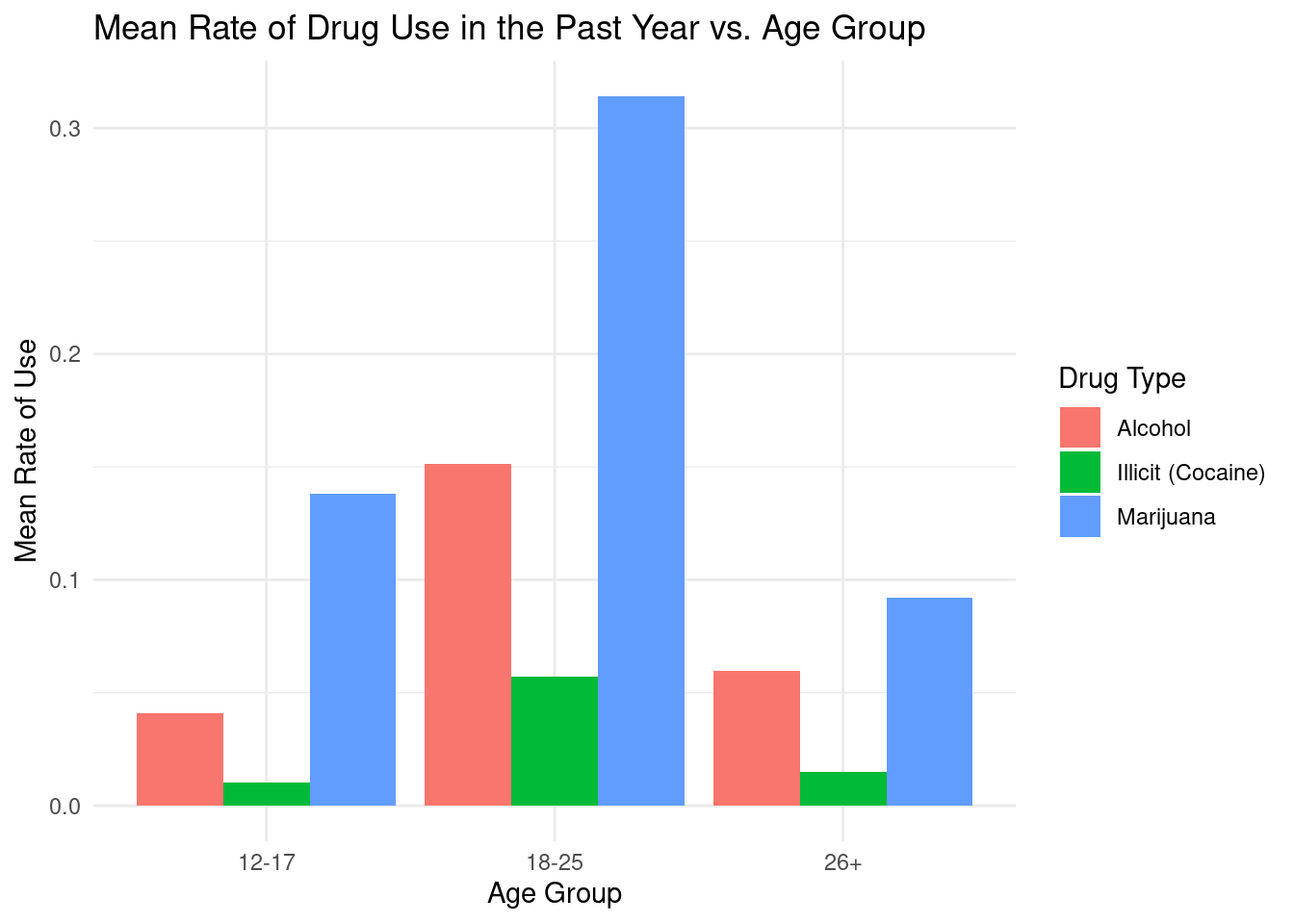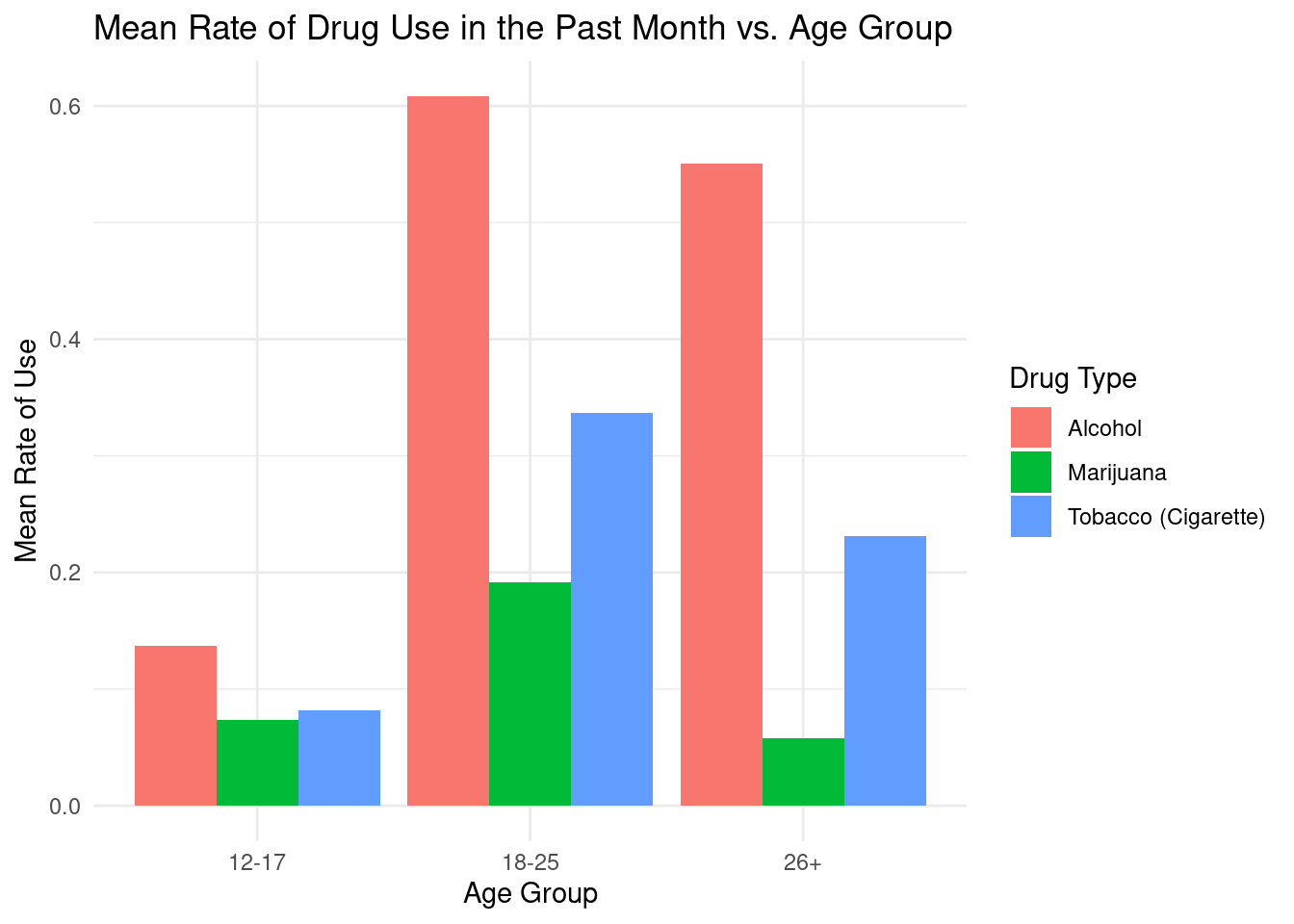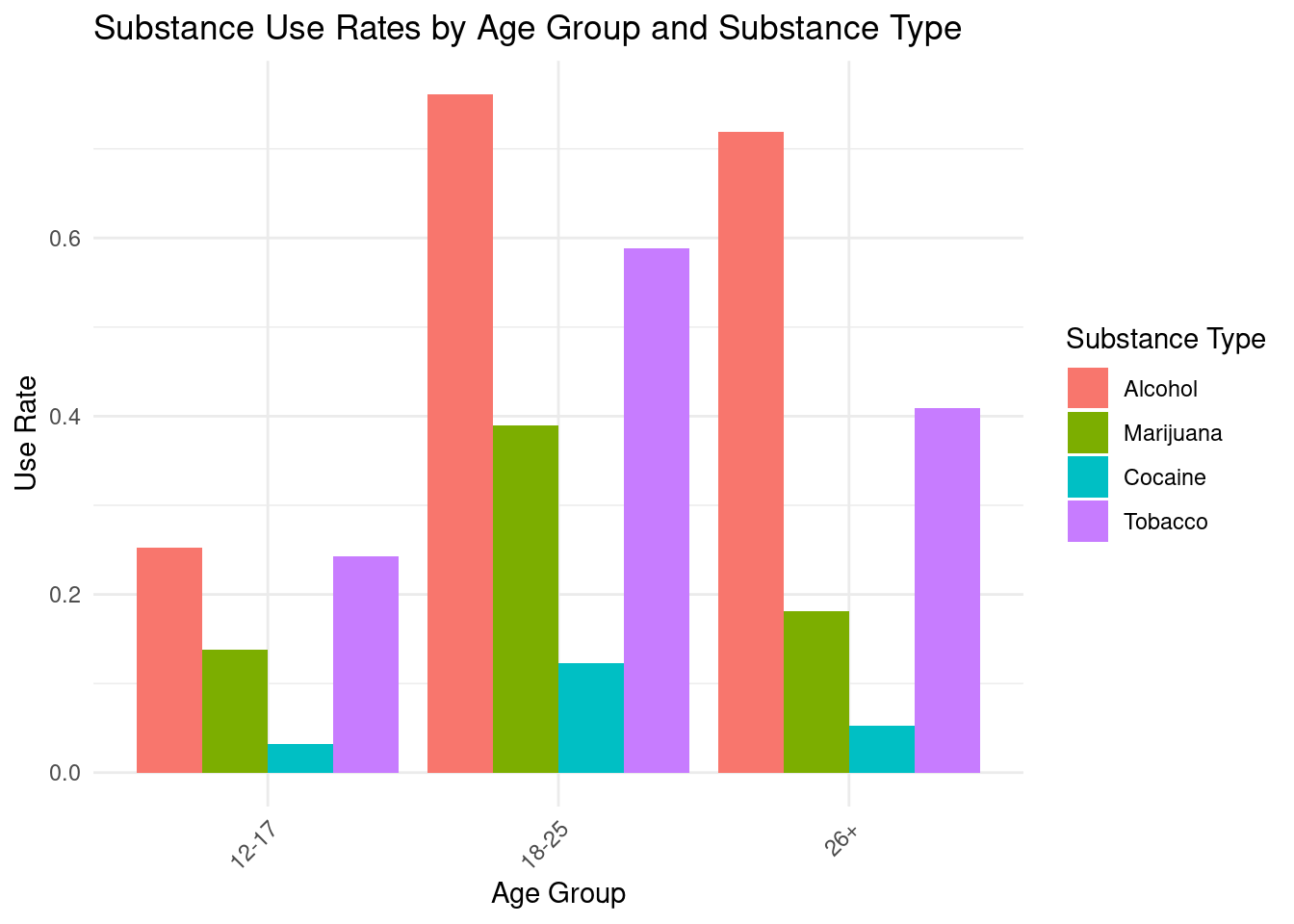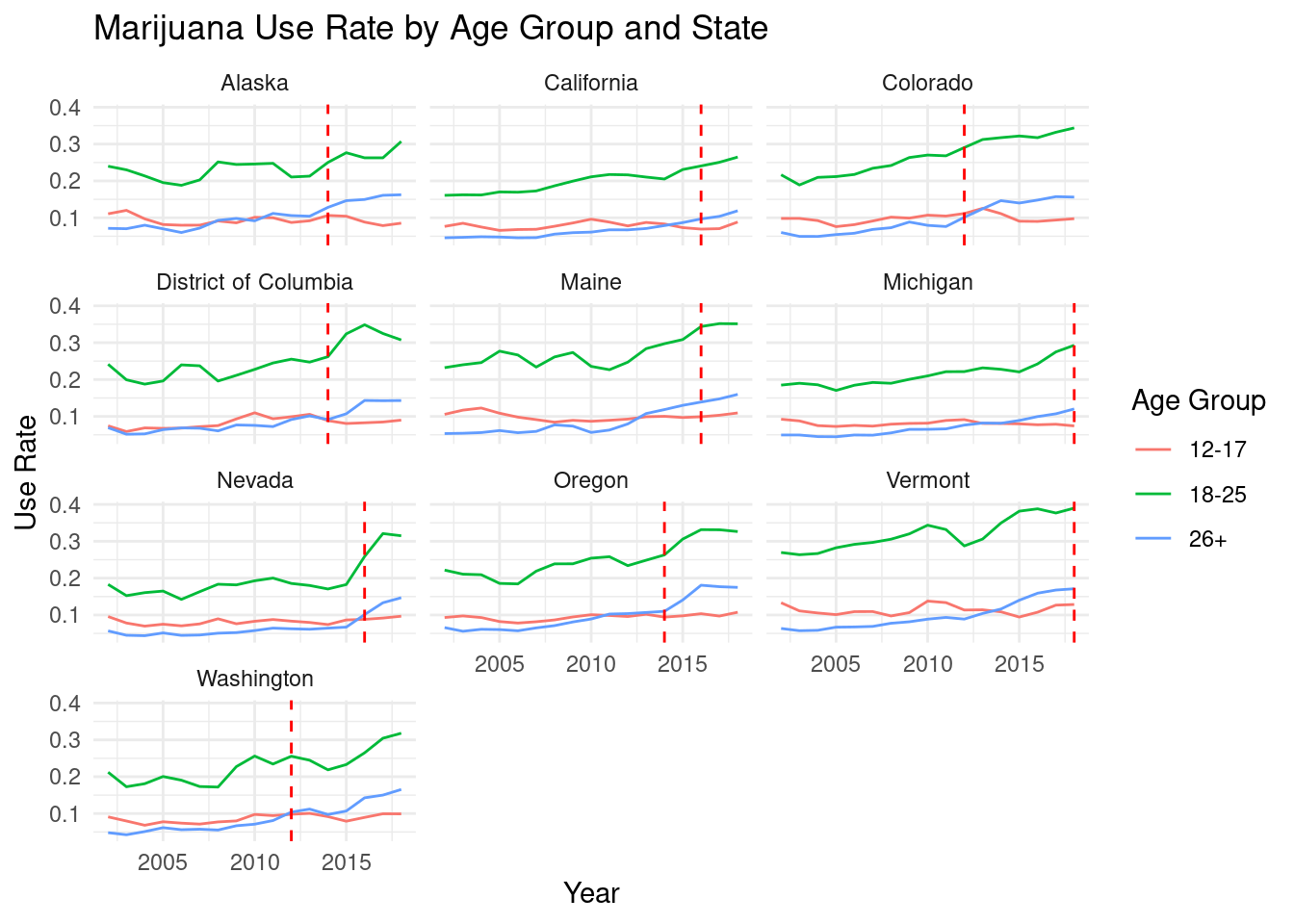Highlights from EDA
::: columns ::: {.column width=“50%”}
── Attaching packages ─────────────────────────────────────── tidyverse 1.3.2 ──
✔ ggplot2 3.4.0 ✔ purrr 1.0.0
✔ tibble 3.2.1 ✔ dplyr 1.1.2
✔ tidyr 1.2.1 ✔ stringr 1.5.0
✔ readr 2.1.3 ✔ forcats 0.5.2
── Conflicts ────────────────────────────────────────── tidyverse_conflicts() ──
✖ dplyr::filter() masks stats::filter()
✖ dplyr::lag() masks stats::lag()
Loading required package: Matrix
Attaching package: 'Matrix'
The following objects are masked from 'package:tidyr':
expand, pack, unpack
Loaded glmnet 4.1-7
Mean rate of drug use in the past year divided into 3 age groups (12-17, 18-25, 26+) Focus on 3 types of drugs: Alcohol, Ilicit Drugs (Cocaine), and Marijuana :::
::: {.column width=“50%”}
Conclusions + future work
Future Work
- Future analysis could be done on how
Each analysis resulted in a p-value of less than 2e-16, essentially zero. This implies a significant difference in use rate across age groups means that the average use rates of a given substance type are not the same for all age groups. In other words, the proportion of people using a specific substance within one age group is significantly different from the proportion of people using the same substance within another age group.
This finding implies that age is an important factor in the use of a particular substance type. It suggests that substance use behavior might be influenced by factors that vary across different age groups, such as social environment, peer influence, availability, or developmental stage.
We ran a second analysis using a linear regression model to try and determine whether the effects of legalization increased use rate and if this increase was uniform across age groups. The main effect coefficients for Legal_StatusMedical, Legal_StatusDecriminalized, and Legal_StatusRecreational show the differences in use rate for the 18-25 age group compared to the reference category (illegal status) when the age group is held constant. All these coefficients are positive, which indicates that the use rate for marijuana is higher in states with medical, decriminalized, or recreational legalization compared to states with illegal status for the 18-25 age group.
The interaction terms suggest that the effect of legalization on use rate is not the same across different age groups. For both the 12-17 age group and the 26+ age group, the effect of legalization (be it medical, decriminalized, or recreational) on use rate appears to be less pronounced compared to the 18-25 age group.
The results indicate that legalization (medical, decriminalized, or recreational) is associated with higher use rates, particularly for the 18-25 age group. However, this association is not uniform across all age groups, with the 12-17 age group showing a less pronounced increase in use rate due to legalization.
First analysis findings: Age is an important factor in the use of a particular substance type, suggesting that substance use behavior might be influenced by factors that vary across different age groups, such as social environment, peer influence, availability, or developmental stage.
Second analysis findings: The results indicate the use rate for marijuana is higher in states with medical, decriminalized, or recreational legalization compared to states with illegal status for the 18-25 age group. However, it is important to note that this association is not uniform across all age groups, with the 12-17 age group showing a less pronounced increase in use rate due to legalization.



